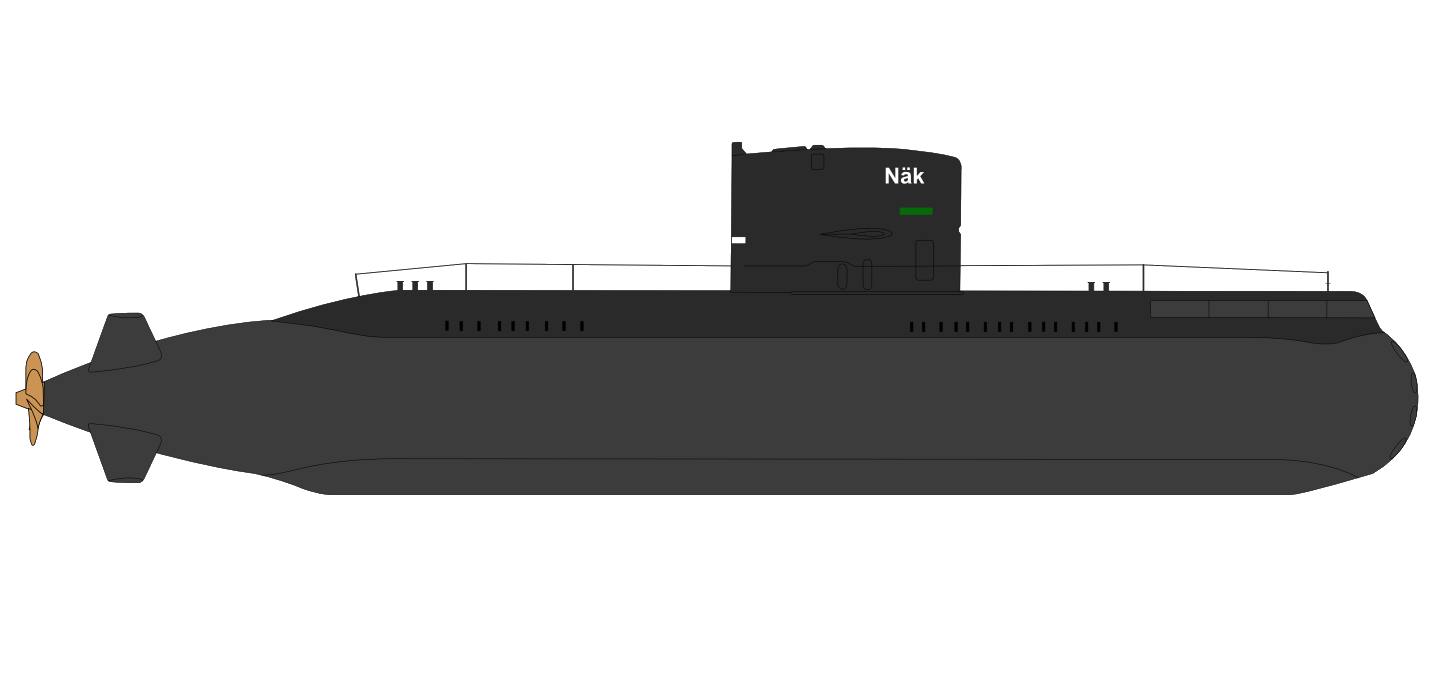
Deployment of the Arihant to the Pacific Ocean is unlikely given the submarine's noise issues. The K-4 may also be capable of targeting Beijing, but would need to be in the northern most waters of Bay of Bengal. The submarine's K-15 missiles can reach most of Pakistan and it's K-4 can target all of Pakistan. The Indian Navy will train on INS Chakra, an Akula-class submarine leased from Russia in 2012. The third and fourth submarines will have a larger configuration, carrying twenty-four K-15 Sagarika or eight K-4 missiles. The submarines have four launch tubes in their hump and can carry up to twelve K-15 Sagarika missiles with one warhead each (with a range of 750 km or 470 mi) or four K-4 missiles (with a range of 3,500 km or 2,200 mi). The boats are powered by a single seven blade propeller powered by an 83 MW pressurised water reactor and can achieve a maximum speed of 12–15 knots (22–28 km/h) when surfaced and 24 knots (44 km/h) when submerged. The complement is about 95, including officers and sailors. The submarines are 111 m (364 ft) long with a beam of 11 m (36 ft), a draught of 15 m (49 ft), displacement of 6,000 tonnes (5,900 long tons 6,600 short tons). They will be the first nuclear submarines designed and built by India. The Arihant-class submarines are nuclear powered ballistic missile submarines built under the Advanced Technology Vessel (ATV) project. The initial intent of the project was to design nuclear-powered fast attack submarines, though following nuclear tests conducted by India in 1998 at Pokhran Test Range and the Indian pledge of no first use, the project was re-aligned towards the design of a ballistic missile submarine in order to complete India's nuclear triad. Then Defence Minister George Fernandes confirmed the project in 1998. The Indian Navy's Advanced Technology Vessel project to design and construct a nuclear submarine took shape in the 1990s. Following the 1974 Smiling Buddha nuclear test, the Director of Marine Engineering (DME) at Naval Headquarters initiated a technical feasibility study for an indigenous nuclear propulsion system (Project 932). The event demonstrated the significance of nuclear weapons and ballistic missile submarines to then Prime Minister Indira Gandhi. In response, the Soviet Union sent a submarine armed with nuclear missiles from Vladivostok to trail the US task force. The records of Nixon-Kissinger communications show no contingency nor any plan under which Enterprise would enter Indian or Pakistani waters, or otherwise intervene in the conflict. Task Force 74 remained in international waters, where it was legally entitled to be. In December 1971, during the Indo-Pakistani War of 1971, US President Richard Nixon sent a carrier battle group named Task Force 74, led by the nuclear-powered USS Enterprise into the international waters of the Bay of Bengal in a show of force. Arihant holds the distinction of being the first ballistic missile submarine to have been built by a country other than one of the five permanent members of the United Nations Security Council.

The lead vessel of the class, INS Arihant was launched in 2009, and after extensive sea trials, was confirmed to be commissioned in August 2016. These vessels are classified as ' strategic strike nuclear submarines' by India. They were developed under the ₹900 billion (US$11 billion) Advanced Technology Vessel (ATV) project to design and build nuclear-powered submarines. 'Slayer of Enemies' in Sanskrit) is a class of Indian nuclear-powered ballistic missile submarines being built for the Indian Navy. 6 × 21" (533 mm) torpedo tubes – est 30 charges (torpedoes, cruise missiles or mines).1 x CLWR-B1 pressurized water reactor (83 MW).Arihant & Arighat: 6,000 t (5,900 long tons 6,600 short tons) surfaced.

Nuclear powered ballistic missile submarine ₹40 billion (US$500 million) per submarine


 0 kommentar(er)
0 kommentar(er)
